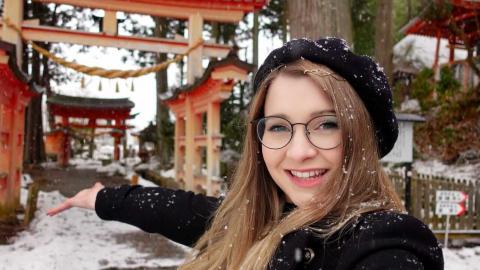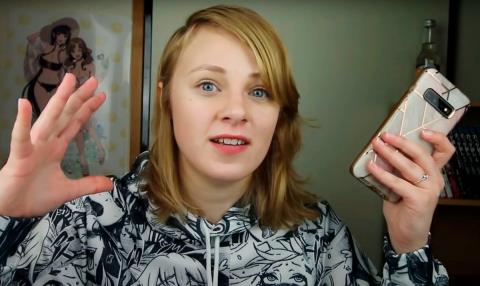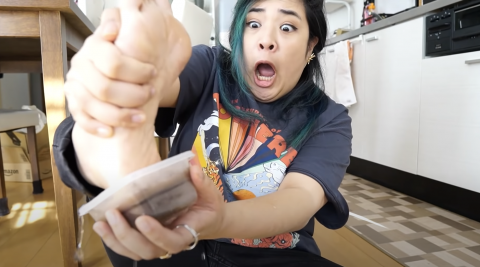Issue:
September 2021
Female YouTubers challenge hackneyed images of life in Japan

Twenty years ago, finding out about life in Japan wasn’t that easy. You might see the odd TV program (Takeshi’s Castle, groan….) or a documentary (Kyoto, Kyoto, geisha, geisha, etc.) or you could pick up a book (ikebana, politics, economics, etc.), but you’d barely scratch the surface of actual life in Japan. YouTube has changed all that. Yes, you still get people dealing in cliches with minimal in-depth reporting, but you also get actual information from real people who aren’t slaves to corporate broadcasters. YouTube basically consists of self-employed people who generally aren’t answerable to anyone but themselves.

“As a YouTuber I don't have to deal with many of the inequality issues that other women face in Japan as I work completely for myself, so I consider myself extremely lucky in that regard,” says Sharla (“Sharmeleon,” “Sharla in Japan”), a veteran Japan-based YouTuber with more than 600,000 followers. Sharla says she just wanted to show what Japan was really like.
“When I first started making videos my goal was always to show everyone what everyday life was like in Japan, because at the time the only window we had into Japan from outside was the odd history or travel program on TV, or maybe an anime. When I left Canada the only things anyone knew about Japan were sushi, samurai, and anime. No one really talked about everyday life in Japan, so I was excited to have the chance to share that: the amazing train system, the vending machines, the ridiculous assortment of snacks available. I just wanted to show everyone the small things that make Japan so great. I think the general public has a more accurate idea of what modern Japan is like now because of the variety of content that is available to watch on YouTube.”
Sharla’s depictions of Japanese life include fun with cats, moving house, travel, beauty tips and living with tattoos. She says she prefers to focus on the positives but still gets the usual angry cybermob baying at her door for any “slights” on Japan.

If you’re after something a little more on the wild side, look no further than “sydsnap,” the YouTube channel of Sydney Poniewaz, a 26-year-old American from the Wisconsin countryside. She could be the girl next door, but only if the girl next door gets drunk in porn bars and discusses sex toys on camera.
“When I first moved here, I only had around 100,000 followers, but after getting here, my videos started getting more attention, especially focusing on things people don’t usually pay attention to,” says Sydney, who now has over 600,000 subscribers. “I started moving toward more adult themes, which is what I always wanted to do, and I’ve had a lot of fun expanding on the variety that is the sex industry of Japan. To me, it’s artistically, weirdly beautiful and there’s so much the world doesn’t know.”
Covering the more extreme side of Japan as a YouTuber is not always easy, she says. As an easy-going American, she finds the shyness of the Japanese poses difficulties. “I think the Japanese are very self-consciousness,” she says. “When you’re covering the sex industry, a lot of the workers don’t want to be in a video and a lot of places just don’t like working with YouTubers.”
She is serious about her work portraying Japan in the media, but doesn’t want to be burdened with too much responsibility: “I would hate to ever call myself a journalist because I’m definitely not. I’d hate to have that responsibility. But I’d be extremely regretful if I put out information that wasn’t correct or gave a wrong impression of what something really is. For me, it’s about getting the information out there. If something’s interesting to you, it’s probably interesting to somebody else, so you might as well just do it.”

The journey of “Akidearest” (real name: Agnes Diego; working name: Aki) to Japan was routed through anime, so seeing videos on Aum Shinrikyo, Tsutomu Miyazaki (“The Otaku Killer”) and the Akihabara Massacre on her channel comes as a bit of a shock.
“I really like true crime,” says the 28-year-old American, who has almost 3 million YouTube subscribers. “I feel I’m learning about that side of Japan that not a lot of people know so much. Because you like anime, you start to wonder more things about Japan. Nowadays on my channel, I don’t talk about anime as much as my life in Japan.
“I try to be as fair as I possibly can because I know that outsiders when they look into Japan, they see all the beauty of it, but at the same time I also take away that veil with my On The Case series which goes over to the dark side. YouTube has opened a lot of doors because of all the journalistic style videos I’ve made, and I feel after YouTube I could use those same skills in a different field.”
The Japanese, she says, are still catching up to the concept of YouTubers filming on their streets. “Making a YouTube video in Japan is as rewarding as much as it’s a big headache. The bigger the project, the harder it is to get permission, as opposed to the U.S. where you can just film and do it. It’s really, really strict in Japan.”
Fred Varcoe is a British freelance journalist. He was formerly sports editor of The Japan Times and Metropolis magazine, and has written on sports, music, cars and other topics for The Daily Telegraph, the Daily Mail, Billboard, Automobile Year, Reuters, the Japan Football Association, the International Volleyball Association and various websites.

